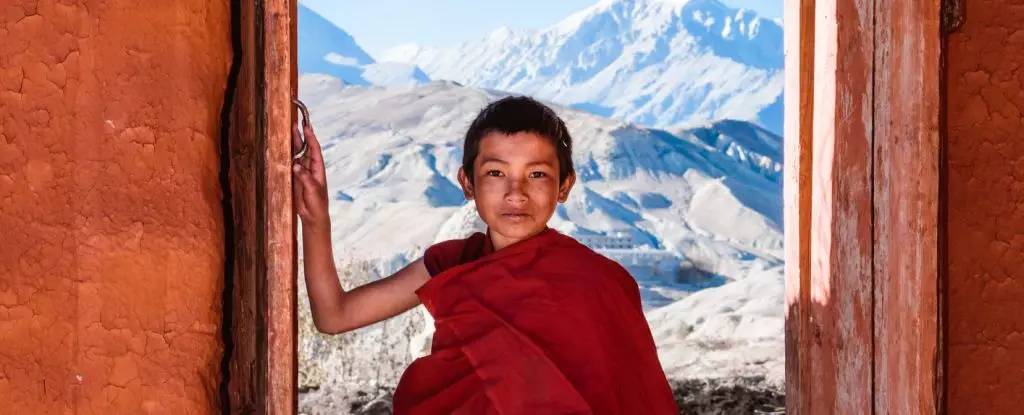Human evolution is an extraordinary narrative of adaptation and resilience. Within the vast and varied tapestry of human existence, our biology continues to evolve, responding to diverse environmental challenges. One of the most remarkable examples of this ongoing evolution is found on the Tibetan Plateau, where communities have thrived despite harsh conditions that would render most other human populations vulnerable. The trek into high altitudes presents an explicit challenge: diminished oxygen levels due to decreased atmospheric pressure. While the average person may struggle with altitude sickness when faced with these conditions, Tibetan communities have displayed an incredible physiological adaptability over thousands of years that allows their members to flourish where others may fail.
Anthropologist Cynthia Beall’s extensive research sheds light on the mechanisms behind this adaptability. Her focus on the Tibetan people’s ability to thrive in such extreme environments reveals essential truths about natural selection and biological fitness. It is not merely a question of survival but an exploration of how specific adaptations enable these populations to navigate the stresses of high-altitude living.
Understanding Hypoxia and Human Adaptation
Hypoxia, characterized by insufficient oxygen in the bloodstream, proves a formidable barrier to life. Notably, inhabitants of the Tibetan Plateau have developed a unique approach to this problem. Beall’s research highlights how various physiological traits work in concert to enhance oxygen delivery, thereby allowing the body to operate efficiently under stressful conditions. Rather than succumbing to high-stress levels typically experienced at high altitudes, Tibetan residents possess biological traits that enable them to make the most of their environment.
The adaptations identified in this population are not isolated phenomena but rather a profound testament to the efficacy of natural selection. Women living in these high-altitude conditions who successfully deliver live births offer invaluable insights into which biological traits confer maximum reproductive success. This naturally selected cohort, therefore, becomes a living laboratory for understanding the interplay between environmental challenges and human adaptation.
Reproductive Success as an Indicator of Fitness
Central to Beall’s findings is the notion that reproductive success can serve as a vital indicator of an individual’s evolutionary fitness. This merit of evolutionary adaptation is compelling: women with higher live birth rates can pass on advantageous traits to their offspring. The relationship between resilience traits—particularly those facilitating oxygen transport—and reproductive success in Tibetan women highlights the notion that natural selection is an ongoing process.
The research surveyed nearly 500 women across a broad age spectrum, exploring several health metrics and reproductive histories. While one might intuitively assume that higher hemoglobin levels would correlate positively with reproductive success, the results were more nuanced. Women demonstrating average hemoglobin levels, but high oxygen saturation, significantly outperformed others in terms of live births. This unexpected finding challenges traditional understandings of physiology—suggesting an equilibrium between several oxygen transport traits rather than an absolute increase in any singular aspect.
Physiological Traits and Cultural Influences
Digging deeper, the attributes discovered among these women extend beyond blood metrics. Notably, the women with the highest reproductive success exhibited wider left ventricles in their hearts and increased pulmonary blood flow—two significant adaptations enhancing oxygen delivery throughout their bodies. These physiological characteristics reflect an intricate balance between efficiency and health, allowing women to endure the demanding realities of pregnancy amidst low oxygen availability.
Yet, while biology considerably shapes the narrative, cultural dynamics must also be factored into this intricate equation. Factors such as early initiation of reproduction and socio-cultural structures permitting extended reproductive opportunities significantly impact the number of live births. Thus, the synergy between biology and culture creates a fertile ground for evolutionary traits to flourish.
Tibetan communities reveal that human adaptation is not merely a passive response but an active embrace of change, woven into life’s fabric. The continuous shaping of our physiology is a profound reminder that evolution remains a dynamic force, adapting to correspond with our surroundings even today.
The Future of Adaptation and Evolution
As we grapple with global transformations induced by climate change, urbanization, and various societal shifts, the Tibetan model of adaptation offers insights into potential pathways for human resilience. Recognizing our ongoing evolution and our capabilities to adapt to new realities is crucial.
The story of the Tibetan Plateau is not merely a testament to survival but an invitation to consider how the breadth of human experience can inform our future. The adaptive strategies employed by this remarkable population underscore the essence of what it means to be human: to innovate, to adapt, and ultimately, to thrive amidst challenges. Embracing this inherent potential may illuminate paths toward heightened resilience, not just for communities like those in Tibet, but for humanity as a whole.


Leave a Reply